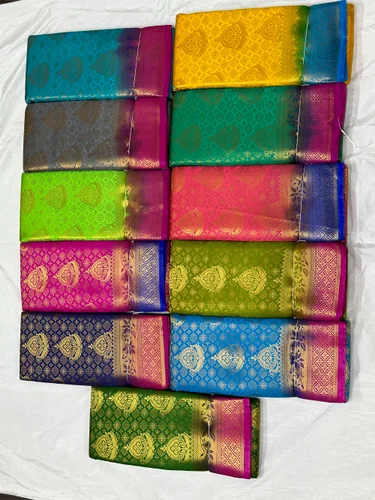

24/7 Phone Services
9845670257


9845670257

Every saree tells a story – your wedding Kanjeevaram, the Banarasi your mother gifted you, that perfect chiffon that always makes you feel elegant. But Bangalore’s climate is quietly damaging these treasures:
Humidity causes dyes to bleed
Hard water makes fabrics stiff and dull
Pollution leaves invisible stains that set over time
At Blue Bell Dry Cleaners, we’ve perfected the art of saree care through our specialized:
✔ Printing restoration for faded designs
✔ Gentle dry cleaning that preserves fabrics
✔ Custom solutions for every saree type
“Many customers cry tears of joy when they see their grandmother’s saree looking new again” – Priya, our lead artisan with 18 years experience.
Problem: Zari tarnishes, colors fade unevenly
Our Solution: pH-balanced cleaning, individual zari polishing
Problem: Prints crack after multiple washes
Our Solution: Fabric relaxers before cleaning, starch-free finish
Problem: Loses drape, develops pulls
Our Solution: Special net bag cleaning, hand-pressing
Pro Tip: Bring your silk sarees every 3 months for maintenance cleaning to prevent permanent damage.
Saree printing is the process of adding or reapplying designs to a saree to enhance or restore its appearance. Over time, the colors and patterns on a saree may fade due to washing, sunlight, or aging. Saree printing is an ideal solution to:
Revive dull or faded designs
Cover up stains or damaged areas
Give a new look to old or plain sarees
We offer a variety of traditional and modern printing techniques to suit your style:
Block Printing – Handmade designs using carved wooden blocks
Screen Printing – Good for detailed, vibrant patterns
Digital Printing – Ideal for high-quality modern and custom designs
At Blue Bell, we also offer regional styles like Kalamkari, Batik, and Ajrakh, depending on your preferences.
Before any printing work begins, it’s essential to dry clean the saree properly. This step helps to:
Remove dirt, sweat, and body oil that may have settled on the fabric
Prepare a clean, even surface so the printing comes out smooth and clear
Ensure the fabric isn’t damaged during the printing process
We at Blue Bell Dry Cleaners use gentle, eco-friendly solvents that clean your saree without affecting its texture or color.
Once the saree is printed, it goes through another round of dry cleaning. Why?
To remove any excess dye or ink
To lock in the new colors and designs, making them last longer
To soften and freshen up the fabric before delivery
This ensures your saree is ready to wear, feels comfortable, and looks brand-new.
1. Digital Assessment (30 mins)
We use spectral analyzers to:
Map original colors (even in faded areas)
Identify fabric composition
Detect invisible stains
2. Gentle Pre-Cleaning (2-4 hours)
Organic stain removers
Individual hand-washing for delicate pieces
pH balancing
3. Precision Printing (4-6 hours)
Japanese digital printers for photorealistic details
Eco-friendly dyes tested for colorfastness
Special techniques for border/body differences
4. Quality Assurance (1 hour)
3-point inspection under different lights
Softness test
Final steam set for longevity
What Makes Us Bangalore’s Best?
No Bulk Cleaning – Each saree processed separately
Customized Cleaning – Different programs for silks/cottons
Hand Finishing – Artisans who understand drape and fall
The Process:
Inspection Tagging (Photographing existing flaws)
Stain Treatment (Using fabric-specific solutions)
Gentle Cleaning (In temperature-controlled machines)
Natural Drying (No harsh tumble drying)
Hand Pressing (With traditional charcoal irons)
Health Benefit: Our organic process prevents skin allergies common with chemical cleaners.
Choose Printing Restoration When:
Borders have faded
Design details are disappearing
Colors look patchy
**Choose Dry Cleaning When:
Saree needs odor/stain removal
Fabric has lost its luster
Preparing for storage
Common Mistake: Trying to wash printed silks at home – this causes irreversible dye
Bangalore-Specific Care Tips
Monsoon Care
Store with neem leaves to prevent mildew
Use moisture-absorbing packets
Summer Protection
Wrap in muslin after wearing
Avoid direct sunlight exposure
Wedding Season Prep
Book services 2 weeks in advance
Ask about our emergency same-day service
bleeding.
Reviving a 40-Year-Old Wedding Saree
When Mrs. Kapoor brought her moth-damaged wedding saree, our experts:
Hand-repaired the zari
Recreated the missing boota prints
Restored the original stiffness
“I never believed it could look this good again” – Mrs. Kapoor, Jayanagar